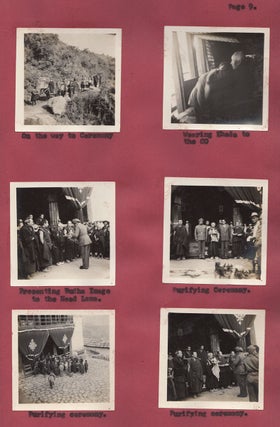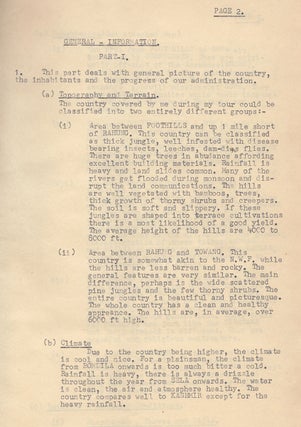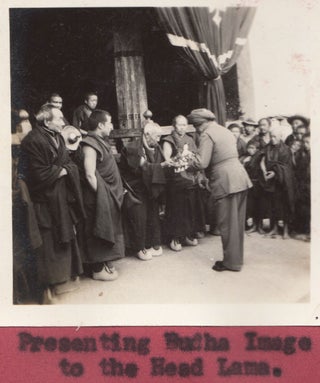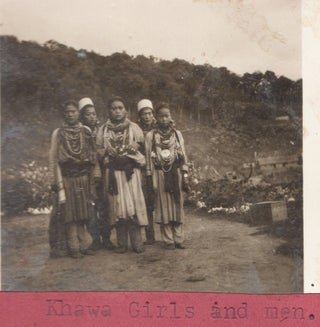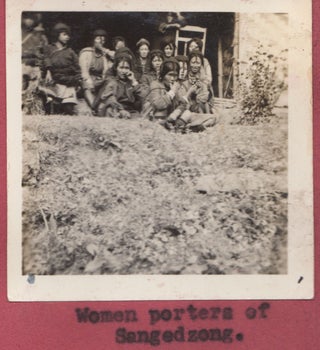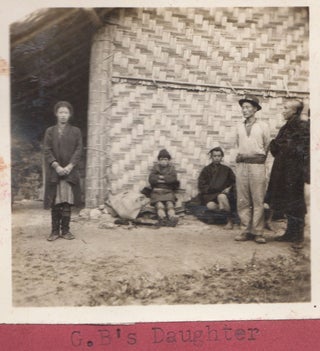Tour Notes. Kameng Frontier Division.
Kameng, India, 1954–55. 4to mimeographed report in English (31 x 20 cm), bound in black cloth-covered boards. 28 pp. of typescript; 83 mounted photos; 8 folding tables. Empty map pocket affixed to rear paste-down. A typescript field report, documenting pacification missions by the Indian Army in the frontier regions of Kameng, 1954–55, illustrated with original photographs. Offered here is a fascinating volume combining Lt. Rai’s journal with his formal field report documenting the geography, ethnography and social-political organization of the remote frontier region of Kameng in northeastern India in the years after World War II. This volume was presumably prepared for internal dissemination among Indian government officials during a period of conflict between the central government in Delhi and the border regions, which had traditionally governed themselves along tribal lines. To that end, the author provides a detailed and valuable account of his first-hand observations of tribal customs, costume, village life, social organization, and inter-tribal relations for each of the tribes he encountered. Of particular interest are the many original photographs, mounted album-style with detailed captions, providing what we assume to be a unique visual survey of tribal life in northeastern India in the period prior to pacification. Among the many tribes documented are Bhutanese, Khawa, Towang, and others. Also depicted are members of both the Indian Civil and Military corps. Of the author, a commanding officer in the elite Assam Rifles division of the Indian Army, we can discover little. Rai appears to have been in charge of a column of counterinsurgency troops following the disastrous Aching-Mori Incident of 1953, in which 47 Indian government officials were massacred by rebel Tagin tribesmen. Explicit about his keen interest in the region, he writes in a lively, personal style, often dramatizing encounters and historical facts in order to heighten his narrative; and his photographs, though clearly the work of an amateur, manage to capture the essence of tribal life in the remotest regions of northern India. Finally, though this survey dates from the mid-20th century, we note that many of these regions had barely been penetrated by Western (or westernized) eyes prior to this time, and this document—apparently never commercially published—provides a rich primary source for study of the role of the Indian military in the region, as well as the ethnography of areas and tribes which are still only marginally under central government control. CONDITION: Good, moderate wear to exterior of volume, lacking one photo and map, one folding table broken in two along fold.
Item #5235
Sold




